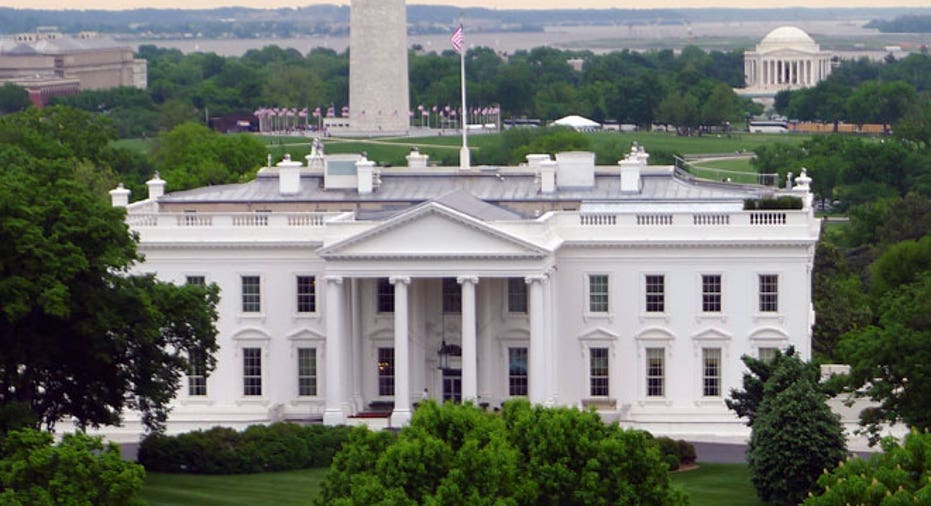White House Walks Back Timing, Size of Tax Cuts; Puts Stock Rally in Jeopardy

The Trump White House is conducting a “listening” tour on how to best cut taxes as it concedes it no longer has a set deadline to produce its tax-cut plan, a move that could curtail the current rally in stock prices, FOX Business has learned.
It’s unclear who the White House is listening to as it cobbles together a proposal to cut both corporate and individual taxes as Trump promised during the 2016 presidential campaign. But White House aides acknowledge there is now indecision about the size, scope and timing of any tax-cut plan, and that the president is listening to a variety of people in determining a new plan.
White House Press Secretary Sean Spicer says the president is even considering other ideas that might deviate from his stated intentions during the campaign to cut the corporate tax rate to 15 percent from its current level of 35 percent, and to slash the top individual rate to 33 percent from 39.6 percent.
“There’s a whole listening part that goes along with it,” Spicer told FOX Business. “There’s a whole engagement aspect to this…We’re at the beginning of the process. We’re not in a position to say what’s in and what’s out, and it’s a little premature to discuss that at this point.”
Investors would likely be disappointed about any delay of the tax-cut plan. A significant change that would mean smaller reductions, particularly in corporate taxes, could cause stock prices to fall because investors have priced into stocks higher corporate earnings based on those business taxes being cut dramatically.
White House officials say any delay can be blamed on the recent failure to reform health care. In addition to reforming the health care system, the White House’s proposal was designed to provide enough savings to allow the administration to cut corporate taxes significantly, and slash those for individuals as well, without significantly inflating the budget deficit.
Another sticking point involves the diverse ideologies at play inside the Trump White House. One of Trump’s key advisers, National Economic Council chair Gary Cohn, is a corporatist Democrat, who may well prefer fewer tax cuts and more infrastructure spending to spur economic growth.
Others, like senior adviser Steve Bannon, want to enact sweeping cuts to corporate and individual rates.
During the 2016 campaign Trump promised to lower the corporate tax rate—one of the highest of any country in the world-- individual rates and simplify the tax code largely by reducing personal income tax brackets to three from seven.
The plan was the handy work of a number of supply-side economists Trump relied upon for economic advice including economist Art Laffer, television commentator Larry Kudlow and Stephen Moore, an economist at the Heritage Foundation.
But since the election, not one of those supply siders –who believe tax cuts generate economic growth and in time increased government revenues-- has made it on to Trump’s economic team; Kudlow was blocked from getting a top economic post as Trump turned to left-of-center Wall Street executives such as Cohn, a former Goldman Sachs senior executive.
With that, and the recently defeated health care reform, the much touted tax-cut plan started to lose momentum inside the Trump White House. For example, in a March 1 interview with FOX Business’s Neil Cavuto, Treasury Secretary Steven Mnuchin said the White House was setting an August deadline to cut taxes, but in recent weeks administration officials began to soften their deadline predictions.
Last Friday, Cohn told FOX Business’s Stuart Varney that the administration would “meet a timetable” to come up with tax-cut legislation, refusing to provide specifics. The president himself echoed Cohn’s remarks in an interview with FOX Business’s Maria Bartiromo, scheduled to air on Wednesday, stating that the failure to reform health care is making it difficult to have a set date for a tax-cut plan.
The White House has also discussed some tax increases to pay for other tax reductions and reduce the immediate negative budget impact, such as implementing a border tax, and a possible carbon tax on fossil fuels.
This indecision over taxes has created significant anxiety among investors, who after Trump was elected in November, began snapping up stocks with the Dow Jones Industrial Average spiking more than 10 percent.
But since March 1, as timing of the tax cut plan became more nebulous, the Dow has declined roughly 2 percent, or around 500 points.
Of course, stocks can move higher for a variety of reasons including economic growth, which has been slow but steady, and interest rates, which despite recent rate hikes remain historically low and conducive for stock investing.
Trump has also promised to cut business regulations, which can bolster stock prices.
But analysts say the biggest motivating factor for the post-election Trump rally has been his plans to cut taxes, particularly business taxes, because they would immediately increase corporate earnings. Analysts believe if the tax cuts don’t materialize this year, investors will then recalibrate their earnings projections lower, and stock prices could fall.
“They are experimenting with all these ideas; They are experimenting with a payroll tax, a carbon tax and a VAT (value added) tax,” Moore said in an interview. “But the plan we have is achievable. It’s practical and it’s pro-growth.”



















